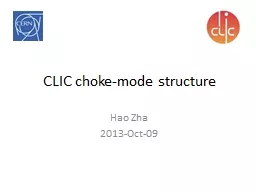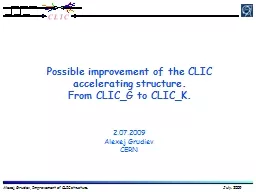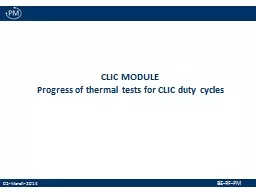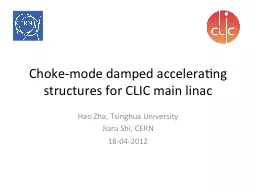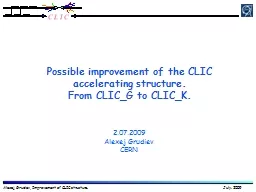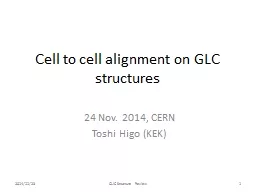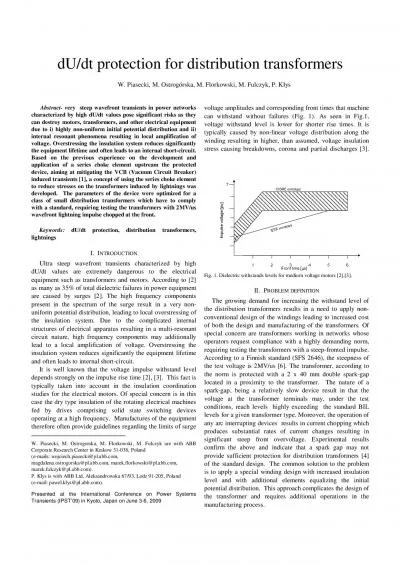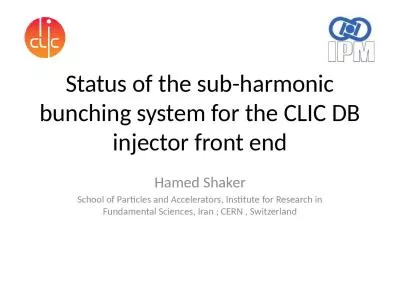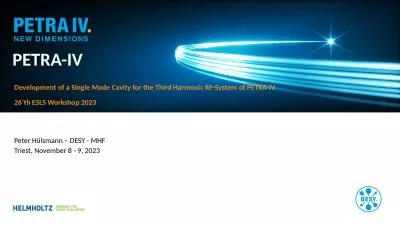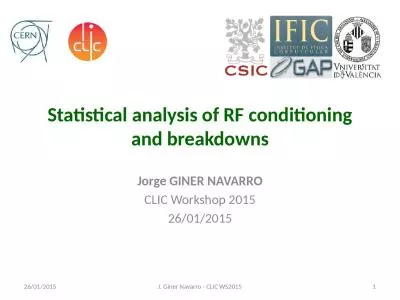PPT-CLIC choke-mode structure
Author : phoebe-click | Published Date : 2015-11-07
Hao Zha 2013Oct09 Outlines 1 Chokemode structure design 2 Optimization on RF parameters 3 Experiments 4 Future plan Overview of CDS design Name Description Parameters
Presentation Embed Code
Download Presentation
Download Presentation The PPT/PDF document "CLIC choke-mode structure" is the property of its rightful owner. Permission is granted to download and print the materials on this website for personal, non-commercial use only, and to display it on your personal computer provided you do not modify the materials and that you retain all copyright notices contained in the materials. By downloading content from our website, you accept the terms of this agreement.
CLIC choke-mode structure: Transcript
Download Rules Of Document
"CLIC choke-mode structure"The content belongs to its owner. You may download and print it for personal use, without modification, and keep all copyright notices. By downloading, you agree to these terms.
Related Documents

